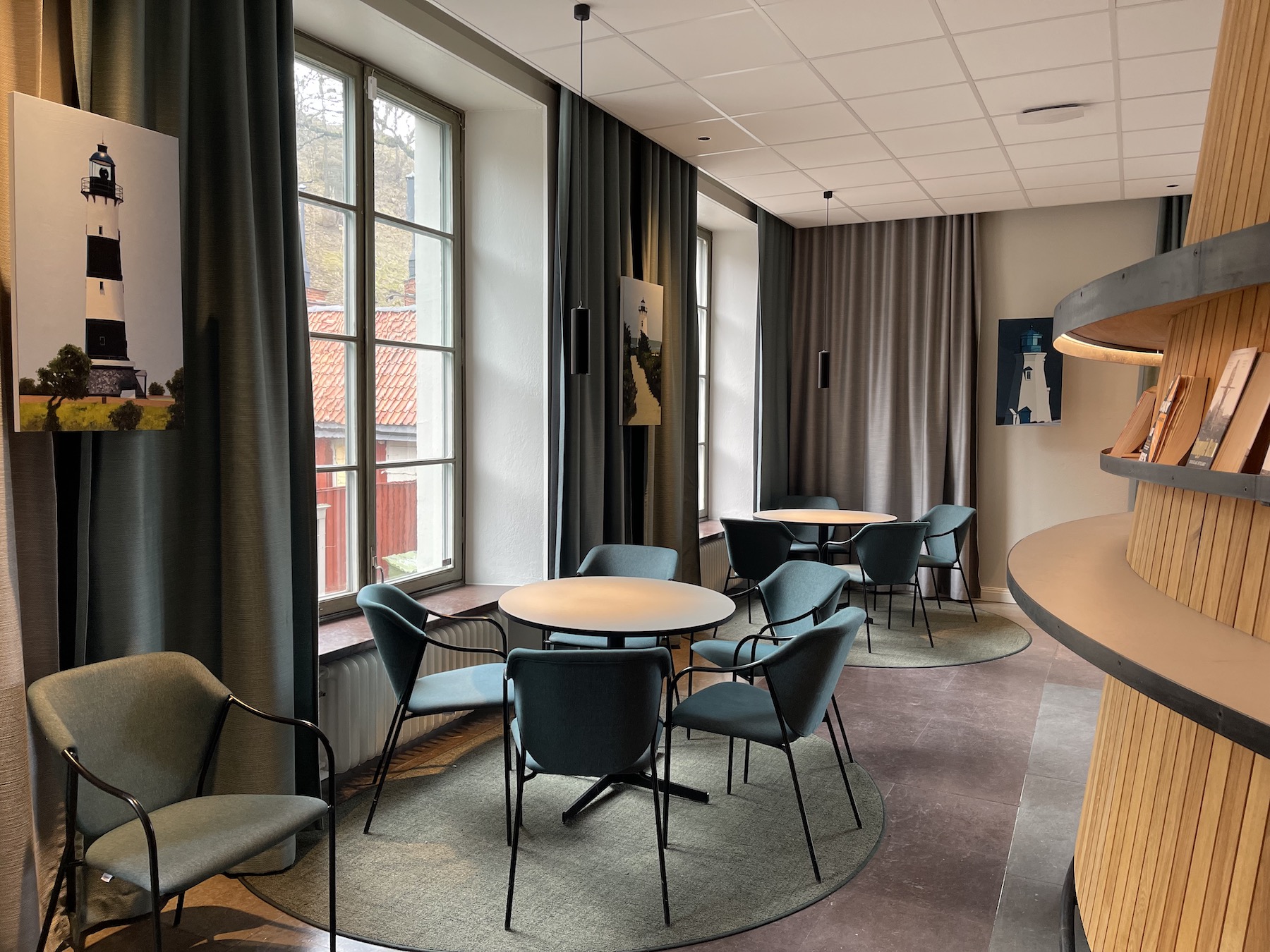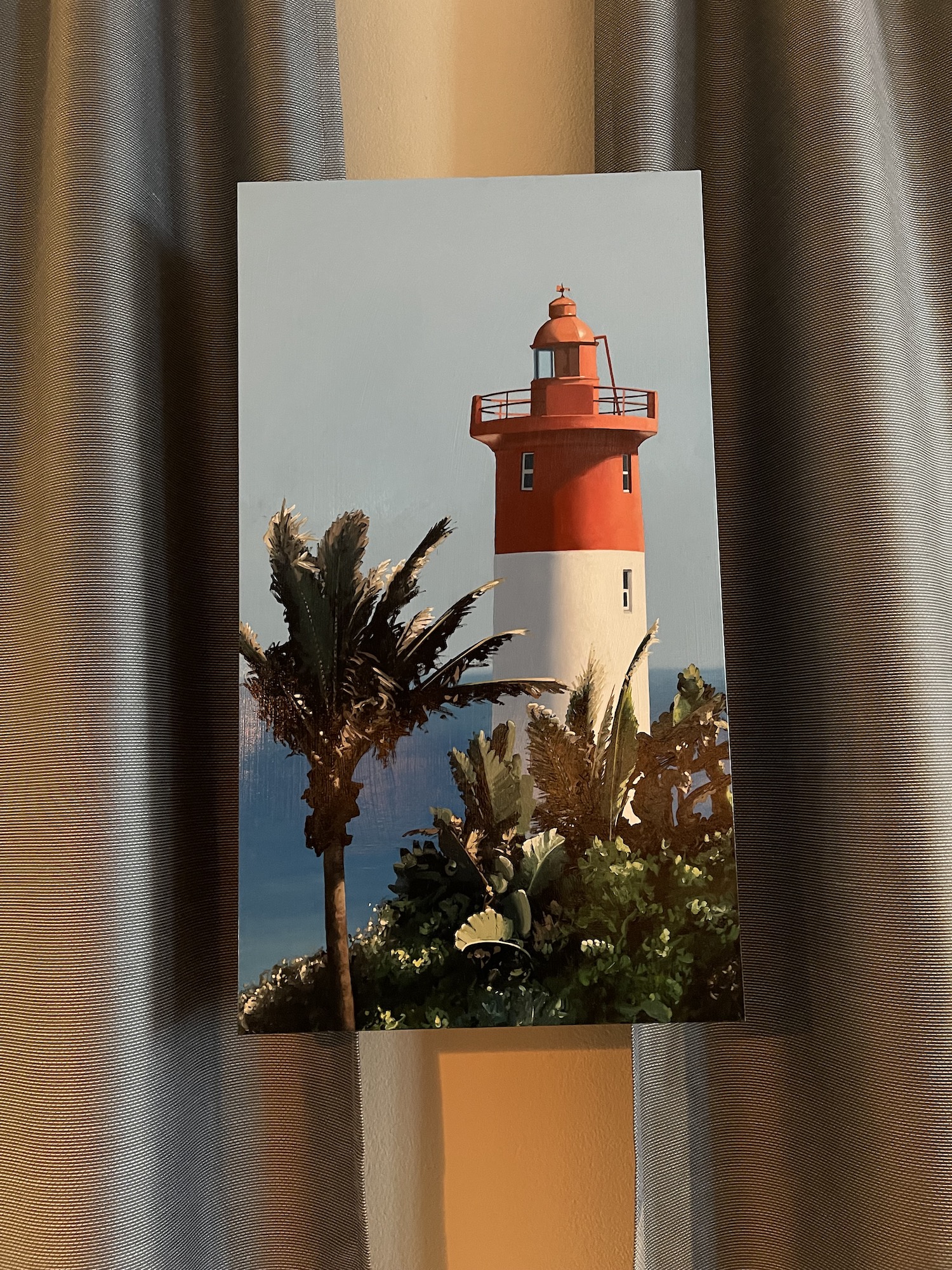The Lighthouse Room

In this photo you can see three out of eight paintings in the artwork The Lighthouse Room, 2023, by Martin Wickström. From left it´s Miraflores, Peru, Martha´s Vineyard, USA, and Ontario, Canada. Photo: Tinni Ernsjöö Rappe
The Lighthouse Room - a text by the SSE President Lars Strannegård
SSE’s main building on Sveavägen 65 was built in 1926 and although many classrooms look quite similar to a century ago, the digital infrastructure and ways of teaching have changed. Therefore, renovations and upgrades to current classrooms are essential in order for SSE to increase the quality of learning. One of the classrooms on the first floor, formerly known as room 120 and situated opposite the Aula (auditrium), has undergone a transformation based on a design from Sweco Architects. The room is now known as the Lighthouse Room by Sweco.
The Lighthouse Room is a room for knowledge creation, designed for different forms of learning and interacting. It is a room-in-room structure and it has gotten its name from the lighthouse-like structure situated in the middle of the room. This unique space is designed for dialogue and seats up to 12 people in a circular formation to favor equal inclusion for everyone. A democratic layout in which no seat is superior to another and where all may equally see and hear one another. In the middle of the lighthouse, there is a fireplace, which aims to lend a warm and calming feeling to the space. Thereby, the room is designed for conversations and dialogue and is hence a response to the historical settings for dialogues found in all cultures through history - from unpretentious storytelling around the campfire to learned conversation in the Roman exedra. The fire of course also alludes to the light of knowledge, the source of energy, warmth, illumination and enlightenment.
Surrounding the Lighthouse there is furniture for other types of interaction. There are tables, chairs and whiteboards intended for groupwork and conversations in smaller groups. The walls are covered by blue curtains, serving as a sound muffler, but also reminds us of waves on the water or the ocean. Above the textile water there are eight paintings of lighthouses, painted by world-renowned artist Martin Wickström, known for his poetic and realistic motifs.
The Lighthouse is a symbol-laden architectural structure that has played an important role in culture and art history. Lighthouses are common motifs in the visual arts. The Lighthouse of Alexandria, one of the seven wonders of the world, has been described by a long list of poets and artists, and book titles such Virginia Wolff’s “To the Lighthouse” show the popularity of the theme. Lighthouses have been the motif by artists such as J.M.W Turner, Paul Signac, August Strindberg and Edward Hopper. Physically, lighthouses have guided sailors along coasts, through waterways and across the seas. Culturally, they have served as symbols of solitude, safety, strength, guidance, and leadership.
Lighthouses also have a clear connection to Swedish inventions, innovations and global business. The Swedish engineer Gustaf Dalén was a development engineer at the gas company AGA. He became the CEO of the company and under his tenure it became world renowned because of its lighthouse technology. Daléns invention was a revolving light apparatus that dispersed gas as bubbles and made lighthouses flash. The distance between bubbles could be varied and thereby lighthouses could flash in different paces, allowing them to be differentiated from each other in the dark. Dalén also invented the sun valve which made it possible for lighthouses to flash only during darkness and thereby limited the gas use. Thomas Edison is said to have uttered “This will never work”, but Dalén proved him wrong. In 1912, AGA received the highly prestigious order to all lighthouse beacons in the Panama Canal and the same year, Gustaf Dalén was awarded the Nobel Prize in Physics.
The Dalén technology thus provided the lighthouses around the world with a common language, or mode of communicating. Lighthouses provide a universal language, a “Lingua Franca” for global Naval traffic. Ships and vessels on waterways across the planet are guided by the flashes.
Martin Wickström was inspired by the idea of the lighthouse and the communication between them. He has painted eight highly realistic, personal portraits of lighthouses from around the world. They are all from different countries, and have distinguished, individual features. The lighthouses remind us of humans. Most of us share features – eyes, nose, mouth, arms, and legs. Yet, we are all different. The lighthouses are similar. At first glance they almost look the same; they clearly belong in the same architectural category. But when scrutinized more closely, the individual features are apparent. The lighthouses remind us of SSE, the many countries represented in our student, faculty and staff composition. Internationalism and common scientific language are key academic features. Yet, we are all individuals with nuances, specificities, and personal traits.
The Lighthouse Room is a gift to SSE’s students and was made possible thanks to a generous donation from the Actum Foundation together with three SSE students from the class of 1979.
Text by Lars Strannegård, SSE President, written 2023.

Umhlanga, South Africa.